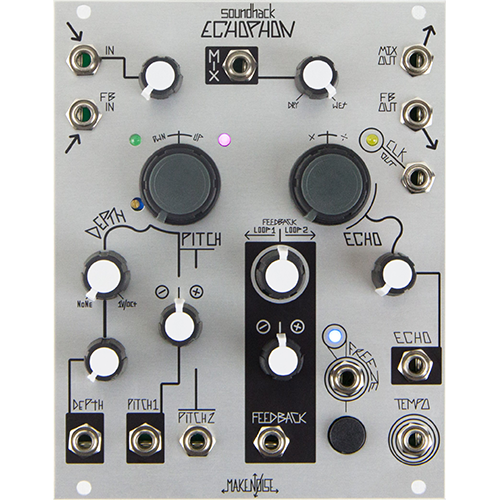

I bought it almost exclusively for the ASR mode, and it did not work for me.įrom my experience, I really don't think it was a "rising edge" issue at all. I bought a Telharmonic a while back and ended up returning it.
Make noise soundhack manual#
I love them because they have a mode that does a ‘Shift Register’ kinda of thing that’s useful for grabbing up to three notes that aren’t diatonic chords.īut it doesn’t work as described in the manual and can be glitchy. You can easily see it with a module like Plaits. This is also an issue for digital modules that have modes which are selected from CV when you use a sequencer. This is obviously at the cost of latency. Nersdeq and Befaco's CV Thing/VCMC can be configured with gate offsets so that they read the voltage after it has had time to settle. This causes a massive issue for CV to MIDI converters. The CV signal tends to slew to the voltage that is required after the gate has been sent out. I have seen this issue from loads of sequencers. I haven't specifically tried this mode, but I have noticed a general issue in Eurorack where sequencers put out CV and gate signals but not at exactly the same time. But what really happens is that it grabs a new note only on the gates rising edge and it will sometimes grab out of tune notes, which should be impossible because it’s quantized to the chromatic scale.
Make noise soundhack update#
voltage controlled.The manual describes an incoming gate as being needed to update ASR notes as long as the gate is high, each new voltage gets grabbed as an ASR note. Mix cv: can control the amount of wet/dry signal coming out of mix out. second control input for pitch, where there is no attenuation.


max range is 2 octave above or below the incoming signal. While echophon is following external tempo source (clock) the echo time controls will multiply/ divide the incoming clock.ĭepth: determines the range of the pitch. Tempo in- external clocks can control the echophon Voltage activates freeze, does not toggle.įeedback in- return for external feedback loops.

the button toggles it on, hitting it again turns it off. the sampled audio can be manipulated by the echo and pitch knobs. voltage controlled.įreeze: lock all current audio in the internal buffer. this feedback produces echo repeats that rise or fall in pitch, depending on the pitch/depth values. one loops around the pitch shifter 0-49%. Short delay times can create flanging/chorusing effects. clock led shows the current speed and connected output can be used as a clock out. Vactrol based mix circuit for smooth blending of dry and wet signalsĮcho: speed of delay. Two independent internal digital feedback paths (loop 1 and loop 2)Įxternal analog feedback path for filtered or processed echoesįreeze button/ gate input allows for hold, stutter and sampling techniquesĢ4 bit adc/dac, 32bit processing, 16bit delay storage operating at 40khz Tempo input allows synchronization of echoes to multiple or division of a master clock
Make noise soundhack software#
the echophon flips the script on the 20 year trend of software synthesis emulating classic analog hardware putting the powers of a true dspĬoding genius into the analog modular synthesizer.ĭescription: pitch shifting echo with smooth time modulation, tempo sync, saturating feedback and a unique pitch shifting algorithm inspired by the springer tempophon, lovingly engineered by dsp guru tom erbeįractional delay with exponential control of delay time -maximum delay time 1.7 seconds, minimum delay time 7 ms the module utilizesĮrbe's gorgeous algorithms on hardware developed by make noise. The echophon is a collaboration between dsp software pioneer tom erbe ( soundhack) and modular synth nerd tony rolando (make noise).


 0 kommentar(er)
0 kommentar(er)
